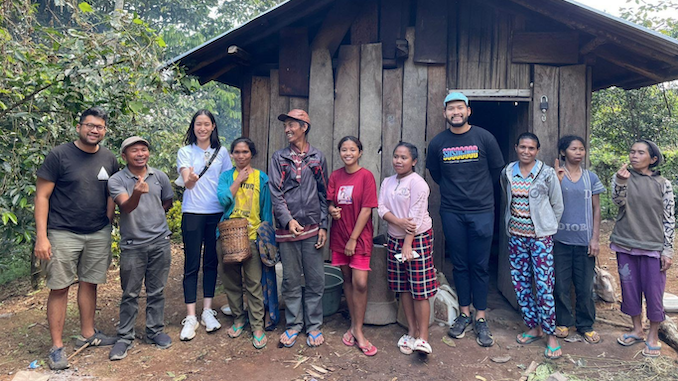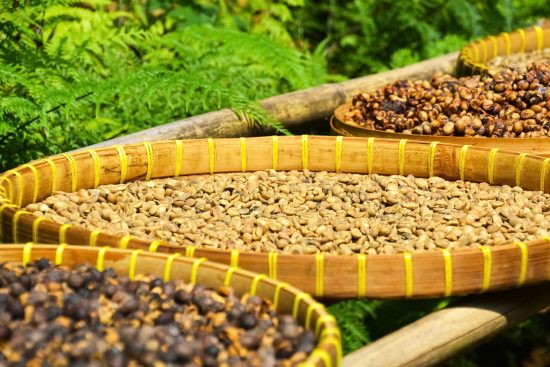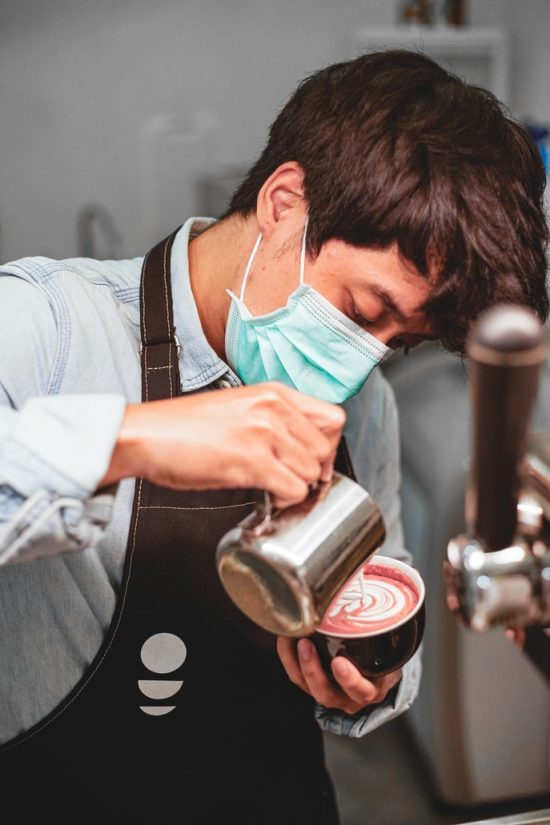
We examine how the increase of domestic coffee consumption can boost the overall value chain, exploring the topic in-depth in Indonesia.
BY SUNGHEE TARK
SPECIAL TO BARISTA MAGAZINE ONLINE
Cover photo courtesy of Mikael Jasin
Coffee is consumed in most parts of the world. However, there are only about 70 countries that both produce and consume coffee, and only about 50 of them export coffee. We spend a lot of time talking about café design, roast profiles, and trends in consumption in many parts of non-producing countries. However, we don’t as frequently engage in conversations about coffee consumption in countries that also produce the beverage.
In light of the curiosity that I had about coffee consumption in producing countries, I had an opportunity to speak with Mikael Jasin to learn about café culture in Indonesia. Mikael is a renowned National Barista Champion from Indonesia with commendable achievements, including finishing in fourth place at the 2019 World Barista Championship. He also recently made the semifinals at the 2021 World Barista Championship at HOST Milan.

Coffee Consumption in Producing Countries
Coffee is not native to many countries that grow it today, and we do not hear as often about how coffee gets consumed in most producing countries.
Reasons why information about consumption patterns in producing countries is so scarce are unclear. Nonetheless, it is difficult to ignore the potential impact may be the colonial history of how coffee was transplanted by colonizers across the coffee belt only to be exported.
The call for understanding the potential of specialty coffee in producing countries has been growing. It was more recently studied in depth through the Specialty Coffee Association’s “A Business Case To Increase Specialty-Coffee Consumption in Producing Countries,” authored by Vera Espindola Rafael in 2020.
In it, Vera underlines the potential of domestic consumption in producing countries. In particular, it has the ability to redistribute the value of coffee across the global chain. That domestic consumption in producing countries can lead to higher retention of the total value created in the coffee value chain in producing countries.
Indonesia as a Consuming Country
In that light, the Indonesian coffee market size is even more significant.
According to USDA’s “Coffee: World Markets and Trade” published in December 2021, Indonesia’s domestic coffee consumption reported in June 2021 was 144% more than that of Australia, 28% more than that of the United Kingdom, and only 6% lower than that of Canada—a few countries that we associate with high per-capita consumption of coffee.
The ICO’s report in May 2021 also illustrated that amongst the exporting countries, Indonesia came second to Brazil in terms of domestic consumption, with a compound annual growth rate of 1.7% between 2017/18 and 2020/21.
However, the absolute size of the market that Indonesia takes up is solely 11.35% of the EU’s, 17.8% of the U.S.’s, and 19% of Brazil’s domestic consumption. And in absolute value, Indonesia’s domestic consumption is not yet comparable to that of the EU or the United States.
Regardless, along with Brazil, Indonesia’s growing domestic consumption has the potential to re-shape the global coffee industry. It is important to note that this data does not differentiate between commercial- and specialty-coffee consumption. However, it still is a noteworthy testament to the potential that the Indonesian domestic coffee market has in shaping the global industry.

Noticing the Shift in Indonesia
Mikael tells me that he has been able to directly experience the rapid growth of the coffee market, particularly the growth of specialty coffee in Indonesia.
“There’s been a big shift in how people perceive and consume coffee domestically, and it is closely related to the economic growth of the country,” argues Mikael.
“More and more people in Indonesia have been entering the ‘middle-class.’ The economic growth nationally has been noticeable and with the “class shift,” people are opting to and can afford things that they weren’t able to previously—including specialty coffee that costs $3+ a cup,” he explains.
Indonesia’s GDP grew by 5.2% in 2018 and 5% in 2019. While it faced a negative growth of -2.2% in 2020 like many other countries (-4.7% in Japan, -5.6% in Malaysia, and -3.5% in the United States), its economy bounced back in 2021 to experience a GDP growth of 4.4% (inflation-adjusted).
Trying to Replicate the Experience Abroad
Coinciding with the boom of the third-wave coffee culture in Indonesia, a growing number of people were also returning to Indonesia after living and working overseas. Mikael tells me that this return was especially noticeable in 2015.
“I also returned from Australia in 2017 as I saw the shift happening in the industry. What the return of these people meant to Indonesia was that people were either looking for the same coffee experiences that they had overseas, or started replicating those experiences here in the country. This led to a surge in coffee shops and roasteries offering more specialty-coffee options. Yet, I’d say that the initial phase of this third wave was mostly focused on the marketing element as well as café experiences—less so on the quality of the coffee itself.”
We will continue this story tomorrow by understanding the evolution of specialty Indonesian coffee within the country.
ABOUT THE AUTHOR
Sunghee Tark (she/her) is the co-founder of Bean Voyage, a feminist organization that collaborates with smallholder womxn coffee producers to build an equitable coffee value chain. She is also a freelance coffee writer, Specialty Coffee Association LEAD Scholar, and Re:Co Fellow.

